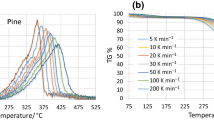Abstract
Prefabrication of modular residential and office units involves rapid manufacturing various building components off-site from different choices of materials, and transportation to construction site for the complete assembly. While this prefabrication manufacturing process could reduce construction costs, time and waste by using lightweight composite modules (LCM), significant challenge is associated with fire performance of an office modular unit using the modular units. This work aims at investigating the fire performance of a modular office unit using the LCM in terms of heat release rate and temperature history and compared with the traditional office unit model using glazing facade. The heat release and flame propagations in a selected prefabricated modular office unit are simulated with computational fluid dynamic (CFD) taking into account the complexity of the materials systems and the influences of the facade. The numerical procedure combining pyrolysis analysis of the composite sandwiches and the fire dynamic simulation of the combustion process is developed. The computational model is validated with thermal responses obtained from the cone calorimetry experiments. Kinetic parameters obtained from the TGA tests and pyrolysis analysis are used as inputs for the models measuring the fire growth index and total heat release. A multilayer sandwich composite material model is proposed to simulate the thermal responses and combustion processes of the prefabricated unit envelop. Temperatures at critical locations of the units are captured and compared with the standard fire curve to reveal the significant improvement in the fire performance of the office modular unit utilising GFRP composite.
Similar content being viewed by others
References
AS1530.4-2005 (2005). Australian Standard. Methods for tests on building materials, components and structures. Part 4: Fire-resistance test of elements of construction. Council of Standards Australia.
Ceroni F, Pecce M, Bilotta A, Nigro E (2012). Bond behavior of FRP NSM systems in concrete elements. Composites Part B: Engineering, 43: 99–109.
Chow W-k (2013). Air pumping action of a plume in a room fire. Building Simulation, 6: 95–102.
Chowdhury EU, Bisby LA, Green MF, Kodur VKR (2007). Investigation of insulated FRP-wrapped reinforced concrete columns in fire. Fire Safety Journal, 42: 452–460.
Correia JR, Branco FA, Ferreira JG, Bai Y, Keller T (2010). Fire protection systems for building floors made of pultruded GFRP profiles: Part 1: Experimental investigations. Composites Part B: Engineering, 41: 617–629.
Dembele S, Rosario RAF, Wen JX (2012). Thermal breakage of window glass in room fires conditions—Analysis of some important parameters. Building and Environment, 54: 61–70.
Department of Treasury and Finance (2008). Office Buildings Standards. Melbourne: Government Services Group.
Dong Y, Bhattacharyya D (2014). Holistic approach and development on propylene (PP)/clay nanocomposites from processing, material characterization to numerical modeling. In: Dong Y (ed), Nanostructures: Properties, Production Methods and Applications, pp. 305–350. New York: Nova Science Publishers.
Duc ND, Cong PH, Anh VM, Quang VD, Tran P, Tuan ND, Thinh NH (2015). Mechanical and thermal stability of eccentrically stiffened functionally graded conical shell panels resting on elastic foundations and in thermal environment. Composite Structures, 132: 597–609.
Ghazlan A, Ngo TD, Tran P (2015). Influence of interfacial geometry on the energy absorption capacity and load sharing mechanisms of nacreous composite shells. Composite Structures, 132: 299–309.
ISO 9705-1 (2013). ISO 9705-1:2013 Reaction to Fire Tests—Room corner Test for Wall and Ceiling Lining Products—Part 1: Test Method for Small Room Configuration.
Harish R, Venkatasubbaiah K (2014). Large eddy simulation of thermal plume behavior in horizontally partitioned dual enclosure. Building Simulation, 8: 137–148.
Imbalzano G, Tran P, Ngo TD, Lee PVS (2015). Three-dimensional modelling of auxetic sandwich panels for localised impact resistance. Journal of Sandwich Structures and Materials, doi: 10.1177/1099636215618539.
Imbalzano G, Tran P, Ngo TD, Lee PVS (2016). A numerical study of auxetic composite panels under blast loadings. Composite Structures, 135: 339–352.
Lawson RM, Ogden RG, Bergin R (2012). Application of modular construction in high-rise buildings. Journal of Architectural Engineering, 18: 148–154.
Li H, Richards C, Watson J (2014). High-performance glass fiber development for composite applications. International Journal of Applied Glass Science, 5: 65–81.
Liou T-H (2003). Pyrolysis kinetics of electronic packaging material in a nitrogen atmosphere. Journal of Hazardous Materials, 103: 107–123.
Liu Y-L, Hsiue G-H., Lan C-W, Chiu Y-S (1997). Phosphorus-containing epoxy for flame retardance: IV. Kinetics and mechanism of thermal degradation. Polymer Degradation and Stability, 56: 291–299.
McGrattan K, Hostikka S, Floyd J, Baum H, Rehm R (2010). Fire Dynamics Simulator (Version 5) Technical Reference Guide. NIST Special Publication. Washington DC: National Institute of Standards and Technology.
Ngo TD, Nguyen QT, Nguyen TP, Tran P (2016). Effect of nanoclay on thermomechanical properties of epoxy/glass fibre composites. Arabian Journal for Science and Engineering, 41: 1251–1261.
Nguyen QT, Ngo TD, Mendis P, Tran P (2013). Composite materials for next generation building facade systems. Civil Engineering and Architecture, 1(3): 88–95.
Nguyen QT, Ngo TD, Tran P, Mendis P, Bhattacharyya D (2015). Influences of clay and manufacturing on fire resistance of organoclay/thermoset nanocomposites. Composites Part A: Applied Science and Manufacturing, 74: 26–37.
Nguyen QT, Tran P, Ngo TD, Tran PA, Mendis P (2014). Experimental and computational investigations on fire resistance of GFRP composite for building facade. Composites Part B: Engineering, 62: 218–229.
Pavlidou S, Papaspyrides CD (2008). A review on polymer–layered silicate nanocomposites. Progress in Polymer Science, 33: 1119–1198.
Subasinghe A, Bhattacharyya D (2014). Performance of different intumescent ammonium polyphosphate flame retardants in PP/ kenaf fibre composites. Composites Part A: Applied Science and Manufacturing, 65: 91–99.
van der Heijden MGM, Loomans MGLC, Lemaire AD, Hensen JLM (2013). Fire safety assessment of semi-open car parks based on validated CFD simulations. Building Simulation, 6: 385–394.
Zarzecki M, Quintiere JG, Lyon RE, Rossmann T, Diez FJ (2013). The effect of pressure and oxygen concentration on the combustion of PMMA. Combustion and Flame, 160: 1519–1530.
Author information
Authors and Affiliations
Corresponding author
Rights and permissions
About this article
Cite this article
Ngo, T.D., Nguyen, Q.T. & Tran, P. Heat release and flame propagation in prefabricated modular unit with GFRP composite facades. Build. Simul. 9, 607–616 (2016). https://doi.org/10.1007/s12273-016-0294-3
Received:
Revised:
Accepted:
Published:
Issue Date:
DOI: https://doi.org/10.1007/s12273-016-0294-3




